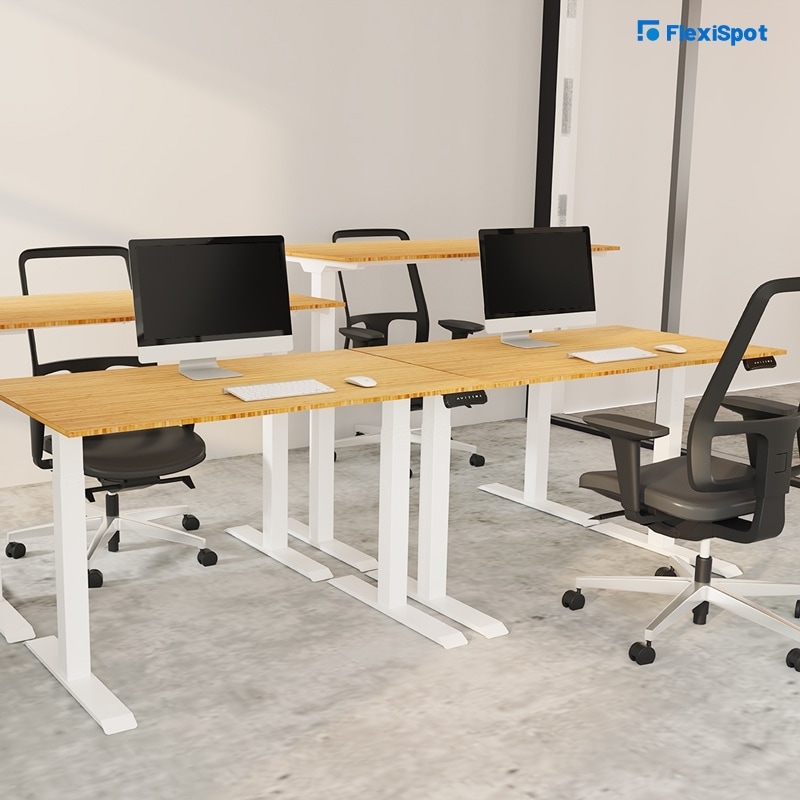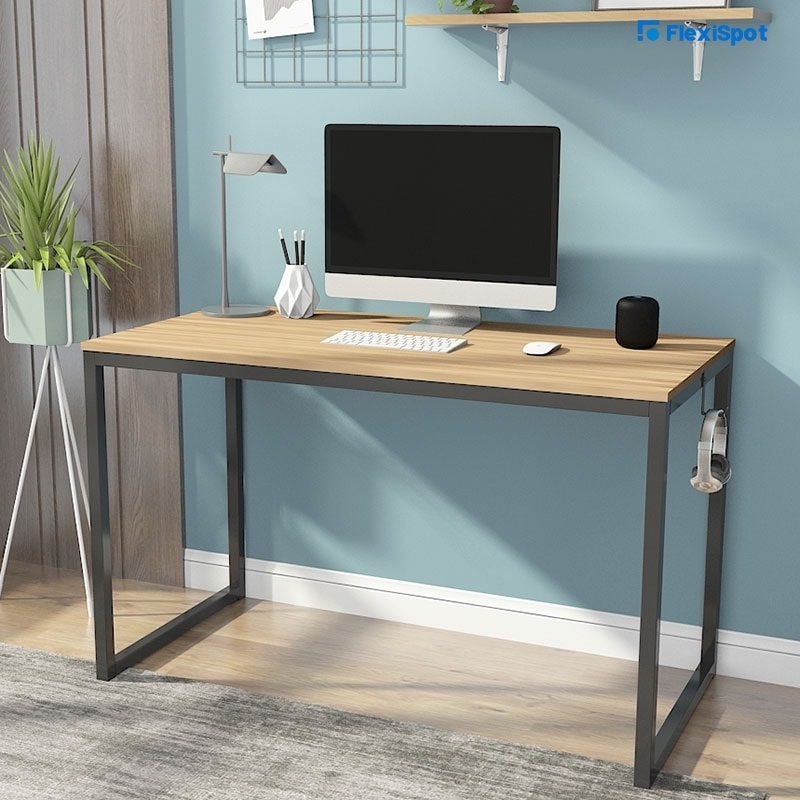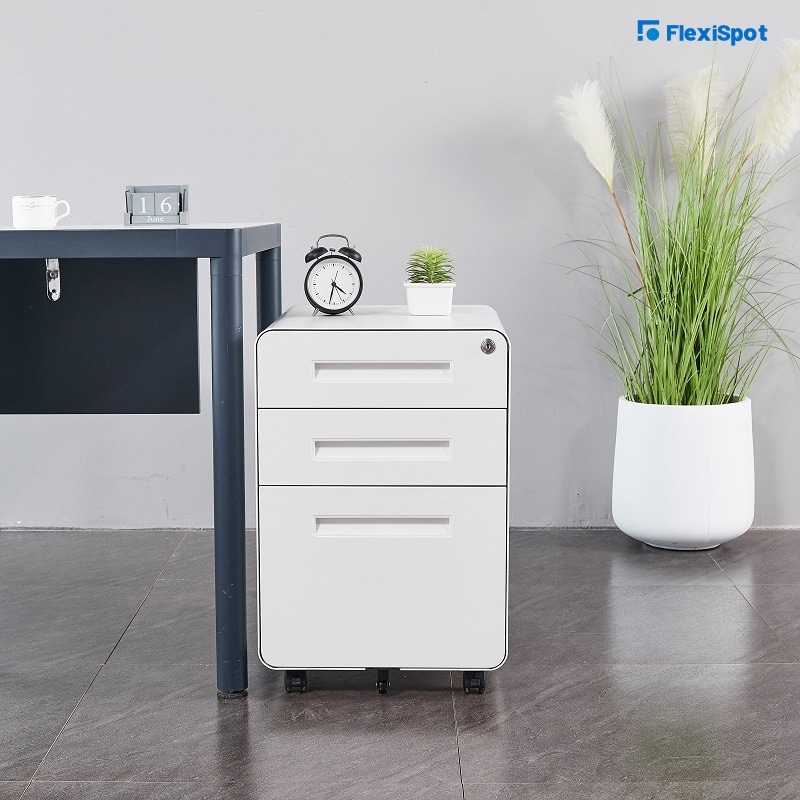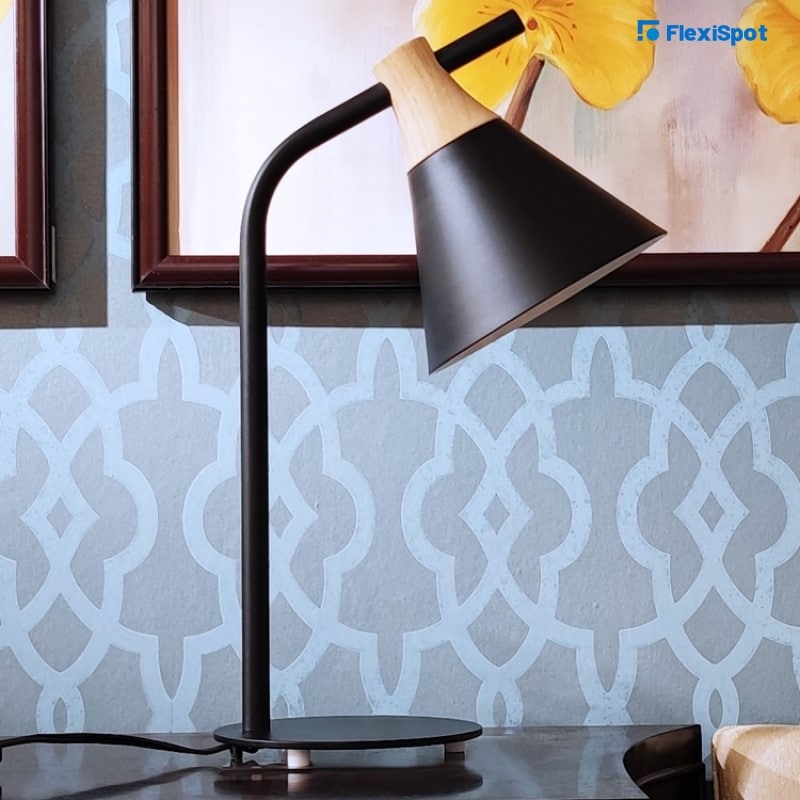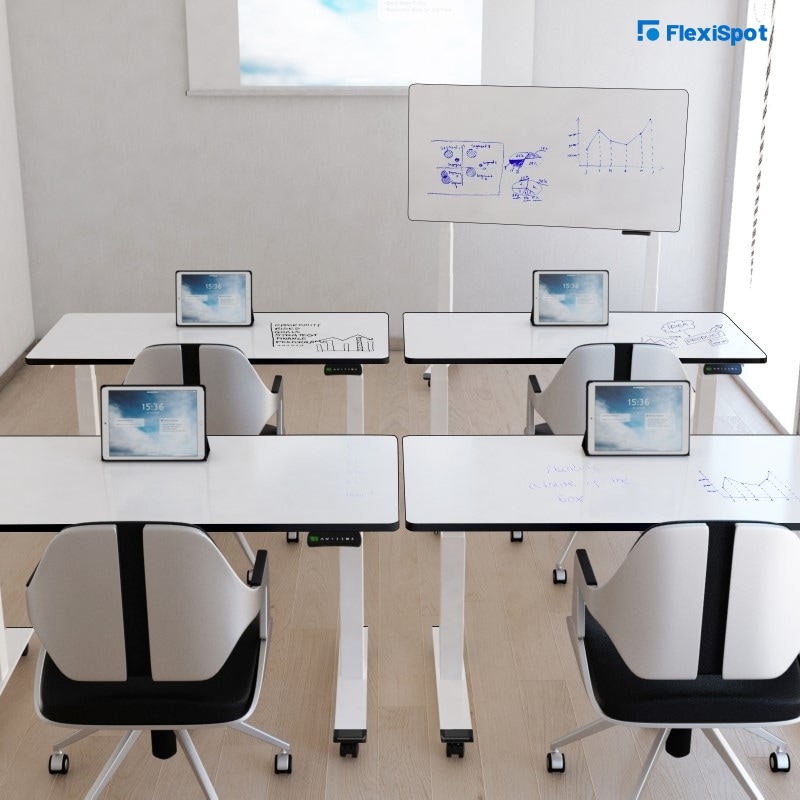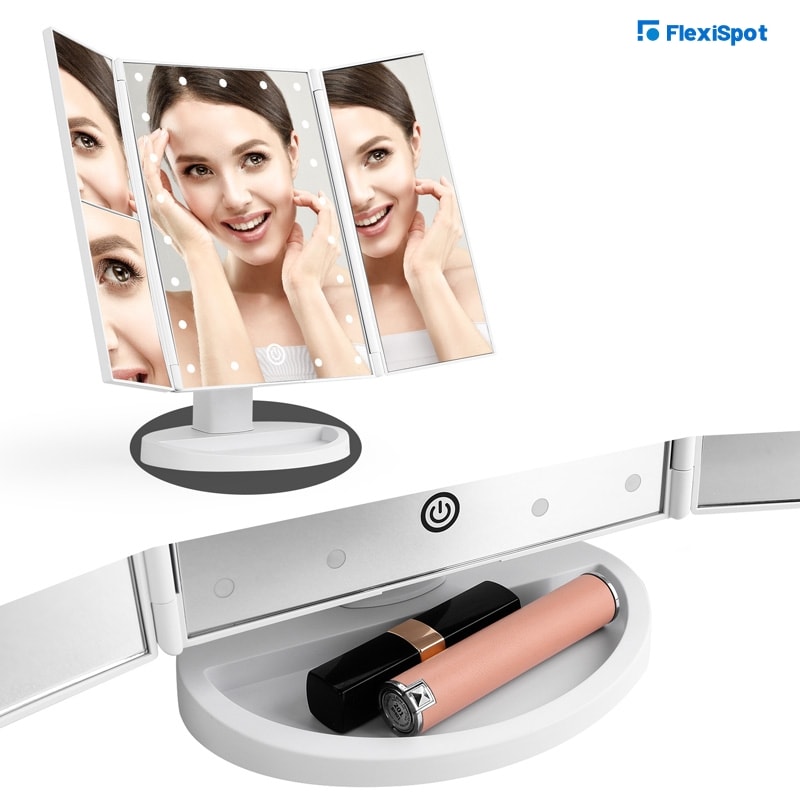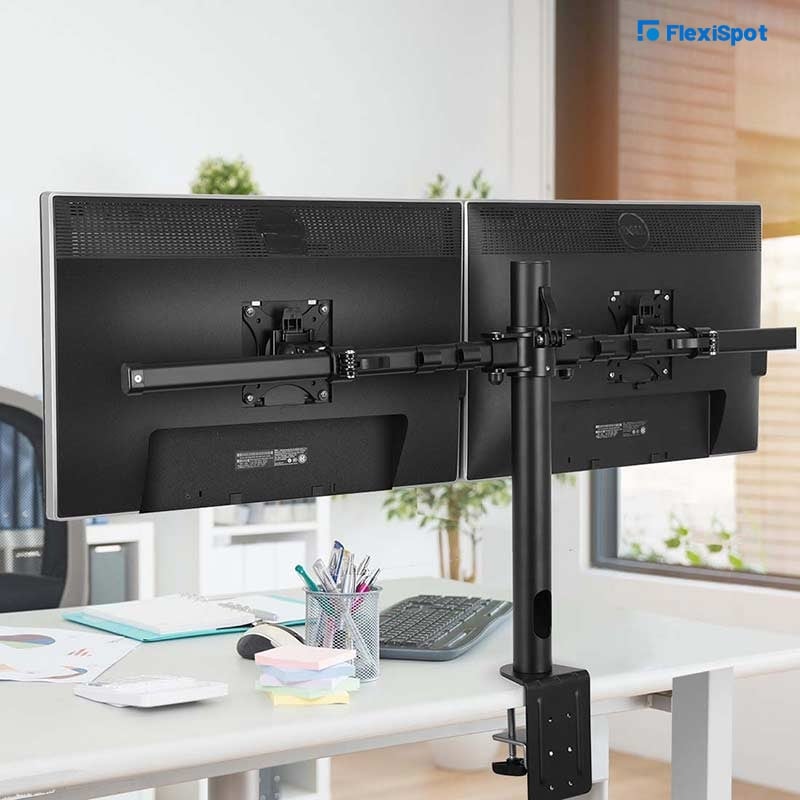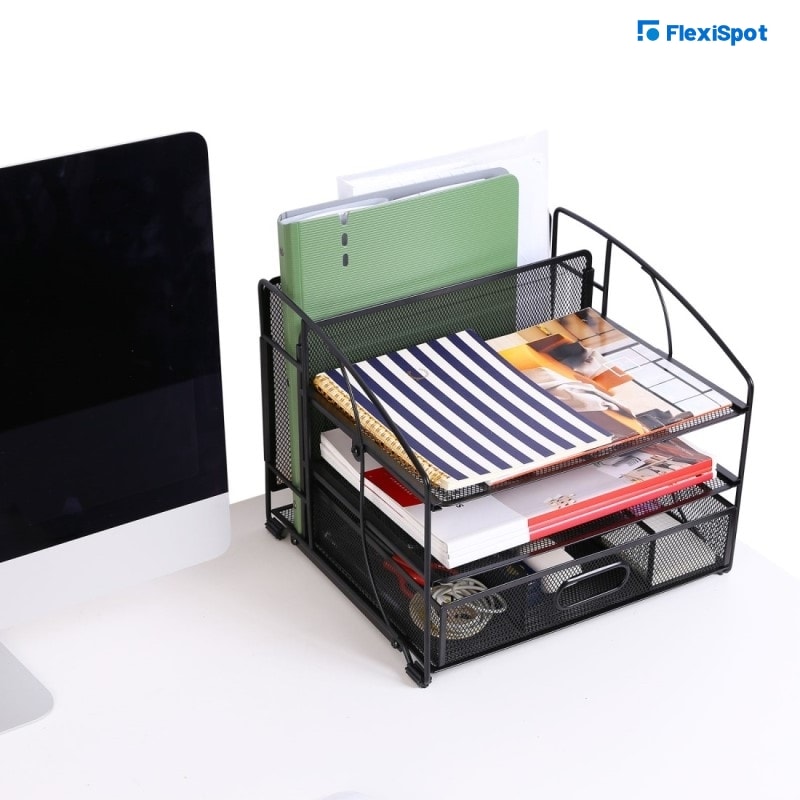The first thing you look at when setting up a shop for your operation is the location. You’d want a place that’s ideally located in an area where other companies in your industry are located. This gives you the advantage of setting up a network that can help your operations flourish.
Unfortunately, sometimes this can be tricky. This is especially true if most of your industry is located in an upmarket neighborhood with lots of foot traffic. And, high rental or leasing rates. In some cases, you may even have to settle for a tiny and windowless office space.
Office lighting is becoming more integral with the trend towards open concept floor plans and glass-walled meeting rooms. Office lighting also plays an important role in:
Creating a pleasant atmosphere where employees feel motivated, productive, and healthy
Improving memory recall
Increasing productivity
Reducing fatigue
Achieving this type of environment in your home office, it's best if your room is well illuminated.
So what do you do if your office isn’t a huge, cozy, and light-filled space? Well, you could do a few tricks with the décor to expand and make your office come to life. However, it's an all-too-common dilemma: You want to brighten up your dark, windowless office, but you don't want to spend a lot of money on expensive lighting. Here are some 10 easy fixes that'll give you instant light and charm.
1. Opting For an Open Office Layout
An open office layout does away with walls and partitions. This expands the space making it airier. It also helps in cutting down on the electric bill as the light can come from a few sources. You can take it a step further by having a hot desk system where people can work from any workstation.
You can down on the space usage by adding ergonomic office chairs into the mix. These chairs occupy a minimum footprint and roll on casters, making them easier to move around the office.
Some job descriptions require a measure of privacy. You can enhance this by setting up modesty panels instead of cubicles. There are so many approaches to an open office. But, all of these approaches certainly go a long way into optimizing the usage of space.
2. Choosing a Vibrant Wallpaper or Paint
Darker shades of color make your walls absorb most of the light. This factor makes your office feel drab and closed-in. Bright color hues have an opposite effect – light bounces off such walls making the space feel wider and more lively. So, settling on a lighter color palette for your paint or wallpaper can make any space feel larger. Most people go for white but shades of pastel can make it more interesting.
Before you can do anything else, you'll need wall and surface coverings that will brighten the room and give the illusion of space. Wallpaper with an interesting print will do just fine as long as it's paired with lighter colors such as white for the trim and furniture. Darker shades can close in a small area even more than expected so avoid those whenever possible.
Paint is probably the best solution for lighting up a tiny, windowless office. If you really want to make an impression on your employees or clients, you have to go bold. Bright colors will do just that! Keep it within one color family or even consider using several hues blended together. A good rule of thumb is at least two coats of paint on the walls. However, remember, if using more than one color, they should harmonize with each other.
Hot Tip: Be sure to keep floor space clear so people can walk about easily and don't trip over furniture or cords on the floor.
For those who may prefer wallpaper, choose a shade that reflects the same general color as your paint. If you are using several colors in your room, consider having them all flow together so they complement each other nicely. Don't go too dark or too light with a chosen color. A good rule of thumb is no darker than a deep taupe and not much lighter than a pale yellow.
3. Making Optimal Use of Vertical Space
One of the greatest disadvantages to having a tiny office space is limited storage space. It puts a certain limit on the number of document folders, trays, and other storage solutions for your paperwork.
Horizontal storage solutions take up a huge footprint. So, they don’t work in tiny and windowless office spaces. They also have an aspect of clogging up the flow of foot traffic and creating clutter that can make your employees feel less energetic or inspired.
You can counter this by investing in vertical shelf solutions. Or take it a notch higher with Mobile File Cabinets. The mobility of such storage solutions will pay off straight away. You can share them among various workstations instead of stacking them in one office corner.
The more vertical space you have, the less closed in you will feel! Make use of shelves or cubicles to store items that might otherwise clutter your desktops. Arrange these along walls facing inward- this will provide a good barrier between you and the neighboring cubicle while encouraging cross-departmental contacts. You can even make use of unused wall space above your cubicle for additional storage.
Give everything a home. By assigning a location for as many items as possible, you'll be able to find stuff faster and create more floor space. If your tiny office has no shelves or cabinets, secure a wood strip to the wall and drill holes for pegboard hooks that can support hanging baskets, bicycle hooks, cups with handles, etc.
4. Sensible Lighting
Flooding the office with artificial lighting is the most obvious way to make up for the shortage of artificial lighting. Well, this is true for the most part. It only works depending on the types of lights you get and how you position them.
So, it may be wise not to rely on one central lighting fixture for your windowless space. This casts a halo of light in the center of the room, effectively leaving all the corners and outlying regions in the shadows.
Adding large fluorescent lights all over the place may have a polarizing effect on your employees. This is especially true if some of them have light sensitivity issues.
Instead, you can have one central light and offset its luminance with a warm Modern Table Lamp at each workstation. This move can also help you conserve electricity as your employees can turn off the lights when the workstation isn’t occupied.
You can also tuck LED light strips into the crevices of office desks, shelves, and other dark nooks and crannies. The linings between ceilings and walls can also benefit from such a consideration. It’s all about playing with the shadowy corners.
Below are other solutions that enhance the lighting in the office:
Consider using light mirrors.
Light mirrors bounce light off of another surface to make the most out of every ray of light in your room. They can make a huge difference in how much natural light enters your tiny space, and therefore will affect the amount of artificial lighting required for this area. You can also install mirrors along windows or near skylights to maximize their effectiveness (and wow factor).
Using Cove Lighting
Cove lighting illuminates a specific area, such as a desk or seating area. It can also provide ambient lighting for an entryway or dark corner of your home office.
Installing Ceiling Lights
Installing more ceiling lights will ensure that your whole room is equally lit and easy on the eyes. They are usually the most practical option if you do not have any windows in your office since there is no need to use light-colored fixtures to avoid direct glare from artificial light sources.
Using Floor Lamps
Floor lamps are a very flexible choice for a small office with a windowless area--they give off brighter lighting than table lamps and they also allow you to adjust their position easily by moving closer to or further away from your work area.
Using Desk Lamps
Desk lamps are great for small to medium-sized rooms, as it is relatively easy to position them in a way to avoid direct glare on your computer screen. They also act as task lighting, so they can help you find specific items or read documents that are difficult to see under overhead lighting.
5. Multi-Functional Furniture Choices
We live in an age where optimization drives most of the aspects of our lives. This factor even applies to the furniture we use. If a sofa can also be a bed. Then it suffices to say, an office desk can also double up as a whiteboard.
The thing with mobile height-adjustable desks is you can customize them in a couple of different ways. You can even set them to a certain height that allows you to stow away office equipment once you're done using them.
6. Using Mirrors to Create the Illusion of Space
Strategically placing mirrors around the office can dramatically expand the sense of spatial awareness around a tiny, windowless office. Mirrors don’t merely mimic the effects of windows. But, they also add a sense of depth to the perspective.
Mirrors also reflect some of the light, helping to create an air of brightness and warmth in a room.
However, it would be best not to overdo it in tightly packed corners. This can make these nooks seem smaller. So, the trick to it is placing them strategically in areas with foot traffic to ensure they are not distracting. Mirrors are also quite ambient, which triggers an instant sense of calmness and restfulness.
7. Hanging Some Art Pieces or Drapes
Sensible drapery and large art pieces can have a similar transformative effect as well-placed mirrors. An art piece that’s framed in white or metallic shades can provide the same relief from monotony as a huge bay window.
Tasteful drapes especially sheer ones can add a sense of privacy while letting the light in. You can also do away with doors and use beaded curtains. This conserves the use of space and makes the office airier.
8. Optimizing Desktop Real Estate
Desk real estate is arguably the hottest property in an office. Unfortunately, you may be forced to stack various equipment, stationery, and tools to make up for the shortfall of space. So, the trick lies in optimizing your space rather than gettinga bigger office desk.
One way to go about this is using a dual monitor mount. These mounts are a must-have especially for day traders, programmers, and other professionals that use multiple software interfaces.
You can employ the use of Mesh Desk Organizers to reign in all the clutter. While you’re at it you can also stack them high to optimize your desktop real-estate even further.
9. Enhancing Privacy with Modesty Panels
Privacy is sometimes an issue when you're in an open office layout, especially if the cubicle front isn't high enough to block line of sight! Cubicles, walls, and other partitions take up loads of space. But, going for truly open office concepts may be untenable in certain industries. You can have the best of both worlds by employing the use of modesty panels around your workstations.
Modesty panels are excellent for tiny and windowless offices. These fixtures enhance privacy and productivity by reducing the level of distractions. They also don’t interfere with the flow of air, light, and collaborative effort. One can simply pop their heads over them and ask a question then go back to their tasks.
10. Optimizing Storage Space
Not only should your desk and cubicle be comfortable, but they should also meet your storage requirements. Drawers and multiple storage shelves will give you a bit more room than if you just had a simple desktop and pencil holder, and may even help you to declutter some of the items that clutter up your living space! Storage solutions can truly help turn a small, windowless office from drab and crowded to functional and spacious!
Consider adding in adjustable shelving in common areas like kitchens or pantries, and if possible always opt for stackable storage bins over single containers. This way you can better utilize vertical space to keep your entire office uncluttered while still storing everything in an efficient manner that doesn't sacrifice accessibility either!
Make the Office Space Bespoke to Your Needs!
We understand that every organization operates within certain industrial conventions. So, there's no one-size-fits-all solution to the dilemma of working in a tiny, windowless office.
With that in mind here are a few suggestions to expanding your spatial awareness while fitting into general industrial themes:
Go for conversational art pieces that align with your profession e.g. if you're an accounting firm subtlety is key, so soft themes and colors will show you're a serious office.
Avoid contrasting colors by all means! Hot-pink and lime-green don’t mix and have a clown vibe.
Say no to tacky décor instead opt for subtle pieces.
Avoid stacking everything to the walls to encourage foot traffic, light, and airflow
Adding an oil diffuser into the mix can have a therapeutic effect that makes everyone forget the stuffiness of the office space.
If possible, play some soft music in your office to mask the sound of keyboards tapping all day long.
Decorate the floors by retiling or pacing hardwood. Carpets also have the same effect of making the space brighter and more vibrant
Moderation is key, so it is best not to overdo it with any of these suggestions.
Tips & Warnings
If you've done all you could to make your office as well- as possible, but haven't made it any larger, making your office more ergonomically friendly is the next step. It will make a huge difference to your productivity and well-being.
Bonus Tip: If you can afford to, move your workstation so that it's not facing a wall as much as possible. Not only will this design highlight the best parts of the room but it'll also give you an open way out should anyone enter unexpectedly!
Conclusion
As you can see there’s more than one way to expand a tiny, windowless office into a vibrant space. So, don’t let your limited space bring you down. Instead, you can use these tips to make it all come to life. Get an interior designer while you’re at it if you can afford one.
If that’s not within your realm of possibility, you can stick to these tips. Another excellent source of information is sites like Pinterest. We’ve found an endless treasure trove of information there.
So, venture out boldly and make the most of your tiny windowless space. And, don't forget to follow us for more juicy tit-bits on how you can make any office space into a Mecca of vibrancy and productivity.
